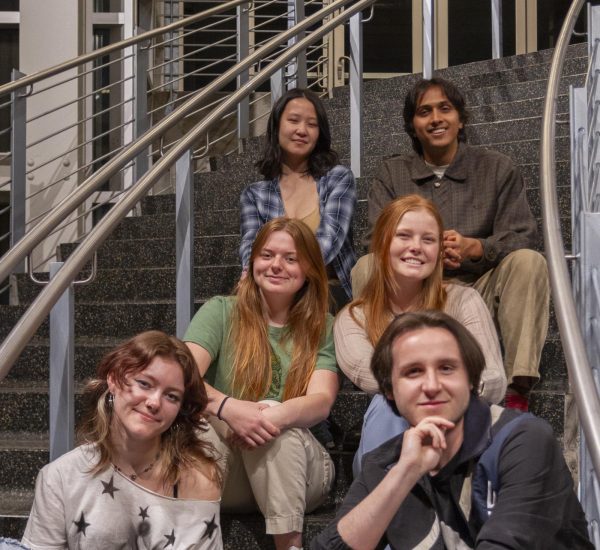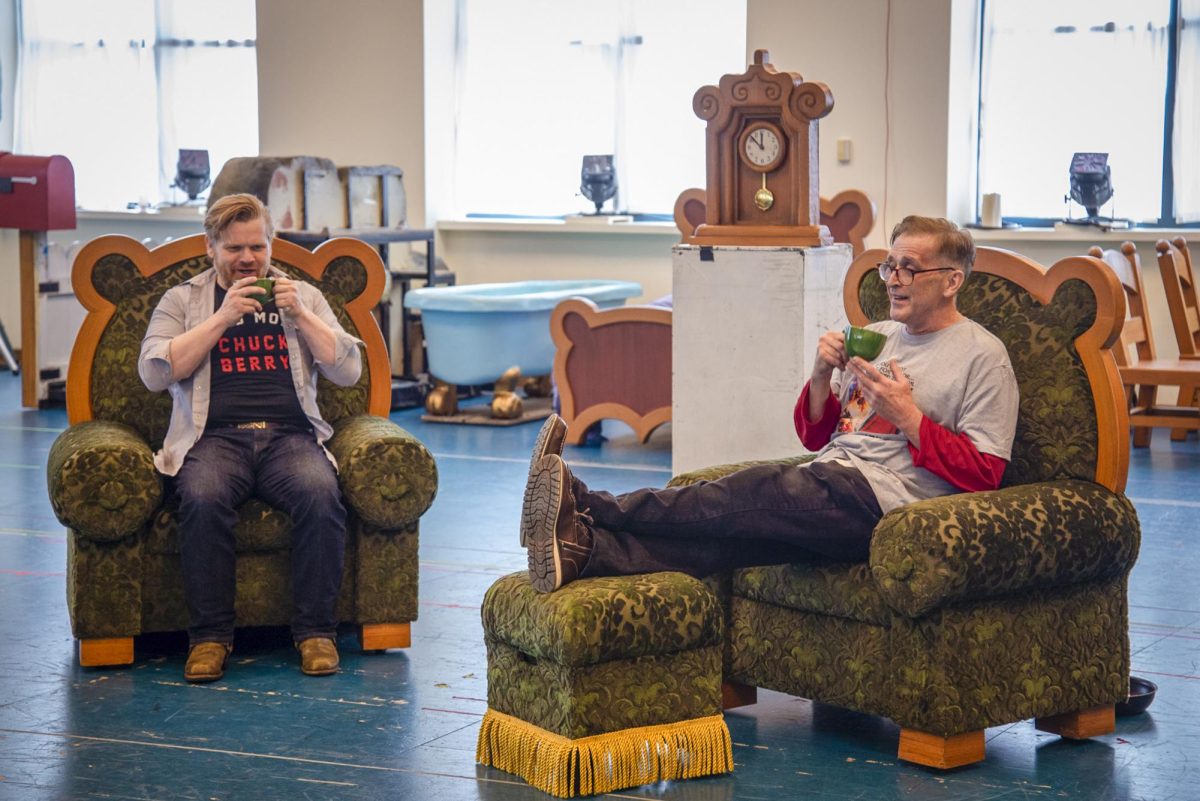One of the last stations in the Blue Line directed to Mall of America is Bloomington’s Metro Central Station. A two minute walk from the station leaves you at a corporate parking garage. During most days of the year, this parking garage is used to house the vehicles of HealthPartners Corporate, an insurance company and non-profit healthcare provider. This parking garage alone is not worth the trip to Bloomington, Minnesota (it is not clear whether anyone has actually ever taken a trip to Bloomington before me). The garage is five or six floors of unremarkable pavement and walls. A parking space is a permanent space for nothing but movement. There is nothing that distinguishes it from any of the other parking garages in Middle America. It is a monument to American Architecture’s absolute lack of creativity, its utilitarian turn, and its yearning for dull, dull universalization. It is an average parking space in one of least interesting parts of the country
For two evenings and six performances, its 3rd floor, specifically its 3rd floors’ parking ramp, became a performance venue. The Parking Ramp Project, brought to fruition by Annicha Arts, an experimental arts group founded in 2004 by artist and artistic director Pramila Vasudevan, seeks to deal with a space that is home to nothing, not even cars. A space that symbolizes the impermanence of our lives. A place that is all movement, never static, a husk.
On the center of the ramp were black foldable chairs, the type one sits in at functions, in one long, triangular line, like the flight formation of Canadian Geese. One was not required to sit in the chairs, and audience members were free to walk around the ramp throughout the show, observing the dancers from whichever vantage point was of most interest. Often,especially through my first viewing of the performance, dancers would politely ask audience members to move from their seats, which the dancers would then take away and place in an arbitrary space that served neither the audience member or the performer. A mixture of thick, heavy, long (possibly neon) wires illuminated the sides, which dimmed as the evening turned to night and the temperature dropped.
The performers, in groups, dragged the wires out in sequences of two or more, interacting with them the way one would interact with building material: carefully, with absolute precision. They also brought bendable metal sticks the height of the space itself that they placed and dance beneath. The bottom of the ramp had a band composed of three: a drummer, an electric pianist and what was either a guitarist. The show’s performers, about 20 in total, were dressed in the outfits that we imagine the lower classes of the automaton-driven dystopian future to wear on their routine survey missions of the barren wastelands: all of the greyest greys, the deepest maroons, the dullest browns, yellows and whites. Over these outfits, the performers wore plastic outerwears, which they took off at the 40-minute mark of each performance. They seemed like a PJ Harvey album cover during a dust storm.
The performers, though you could move around them, never recognized that you were there as a being. Though it was an interactive performance, it was not a performance in which you were interacting with anything but your thoughts of alienation and discomfort. This went doubly for me, as I went alone, whereas much of the rest of the audience seems to have had brought a human (or canine) partner with which to discuss the bizarreness of the hour-long performance against the setting sun.
I am illiterate in movement art, of which this performance was a part. My interpretation of the events (or non-events, which might be closer to the point, seeing as how a goal of the project is to experiment with movement in a space that works only for the purpose of transience) which I watched over the course of two hours were limited to my literal interpretation and the pamphlet otorgated to me by one of the show’s volunteers.
The show’s main questions, according to the pamphlet are: “What does it mean for the body to find stability against a concrete slope? How do we find poise in constant transience?” I cannot answer these questions but to say that the stability was found in direct opposition to the public’s consternation.
The performance encouraged me to, not exactly ground myself (I have never managed to ground myself, really. I don’t personally believe that there is a ground to land on). It seems more like observing a space that would have previously gone unobserved. I don’t think it awoke a sense of perspective within me, but it did help me to broaden my understanding of parking spaces. In short: a parking space is not really a space, but a place. On Monday, HealthPartners employees will drive their cars into the HealthPartners parking garage, only to drive them back out at the end of the work day eight hours later, and they will continue to do this until HealthPartners Corporate is no longer an institution, at which point they’ll be replaced by another institution, with other employees, who will have their own cars, which they will continue to park in the same parking garage.
If I was a HealthPartners employee (and perhaps some of the audience members were) I would have managed to become grounded within the space. As it stood, I had chosen to make a pilgrimage to a parking garage in Bloomington. For a HealthPartners employee, that specific parking garage would be filled with memories of dancers doing David Byrne’s little twitchy dance moves in the Talking Heads’ Once in A Lifetime music video. As a matter of fact, “Once in A Lifetime” probably works as a closer description of both my experience and the expected experience of the performance. Who, growing up, would have known there were so many dance moves to help us absorb the shock of realizing the futile transience of our meager experiences?














Julia Carr • Sep 11, 2019 at 7:05 pm
Hello! I just wanted to ask if you ever have any issues with hackers? My last blog (wordpress) was hacked and I ended up losing several weeks of hard work due to no data backup. Do you have any methods to protect against hackers?
Lily Vaughan • Sep 10, 2019 at 1:04 pm
Thanks for any other informative blog. Where else could I am getting that kind of information written in such a perfect manner? I’ve a venture that I am just now operating on, and I have been on the glance out for such information.
Sam McDonald • Sep 7, 2019 at 3:47 pm
This paragraph about SEO offers clear picture in favor of new SEO visitors that how to do SEO, therefore keep it up. Good work
Brett Candon • Jul 23, 2019 at 7:22 pm
Mass parsite http://bit.ly/2W9CVkn